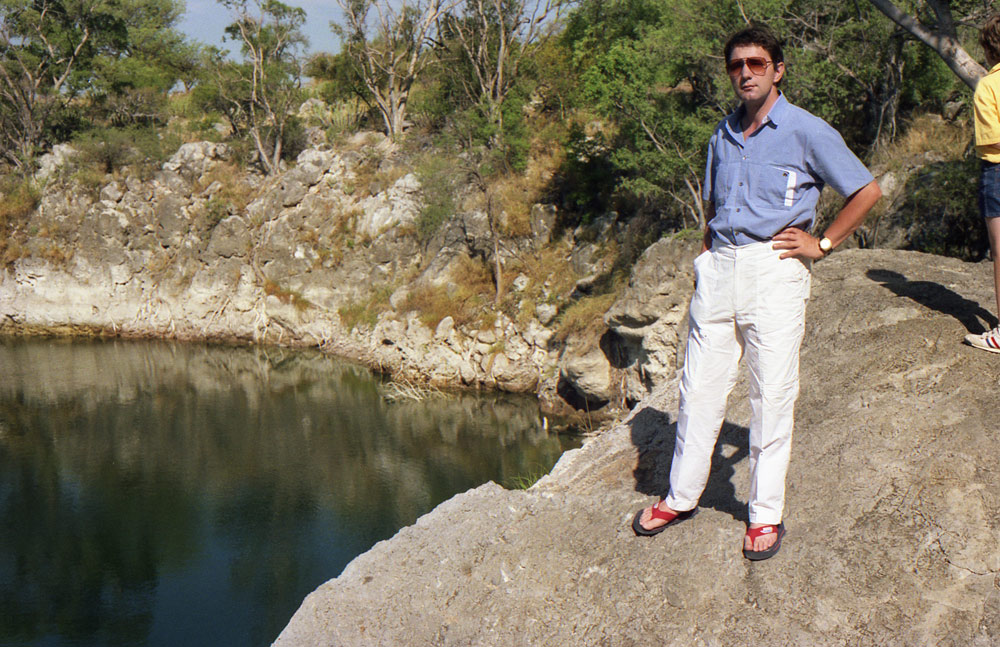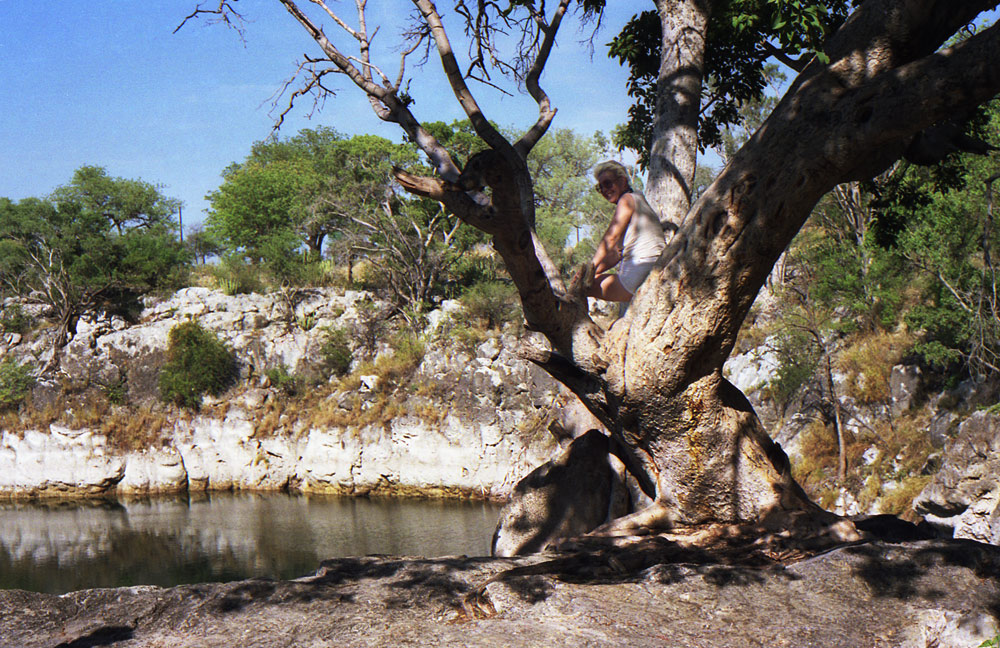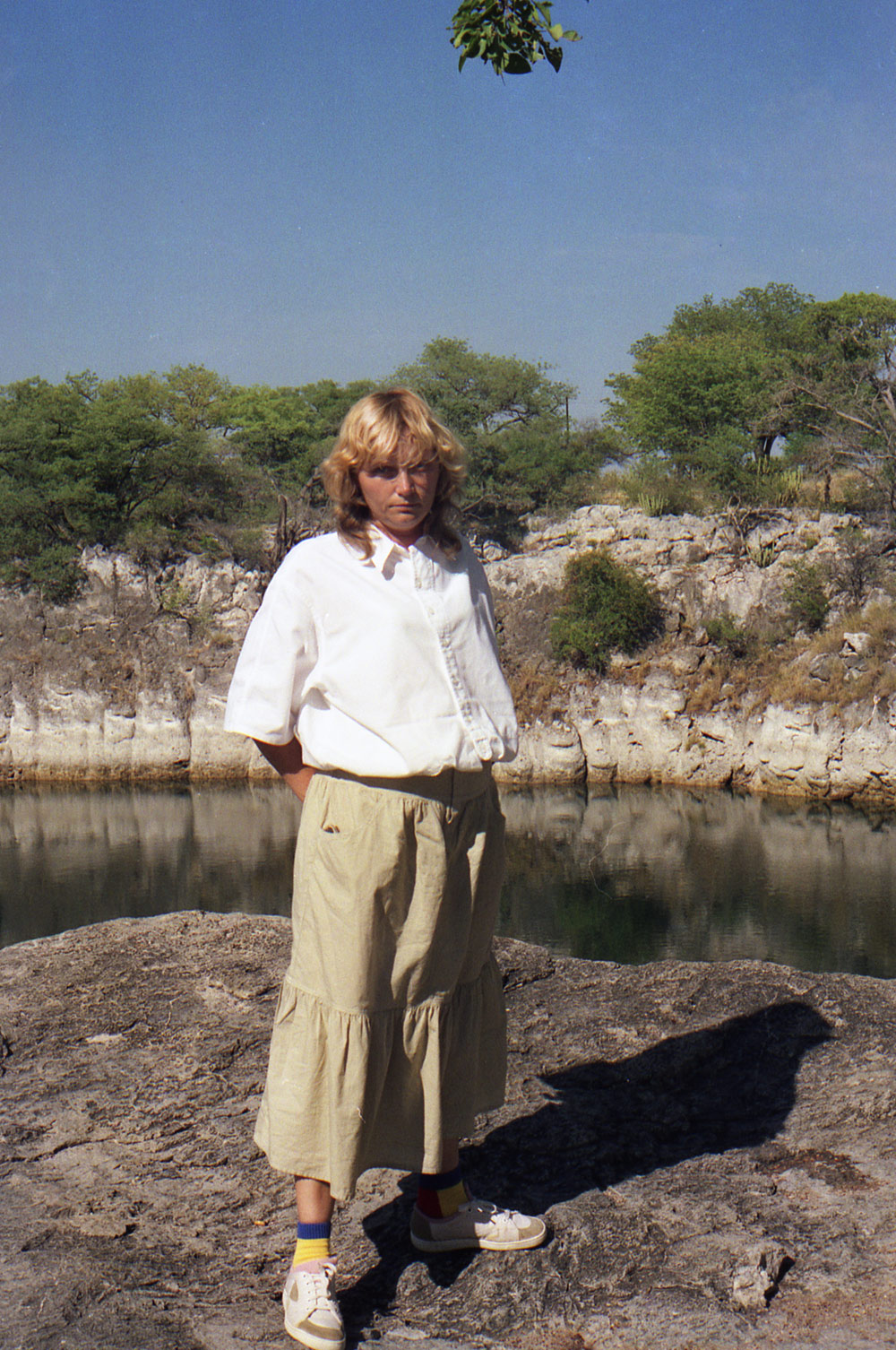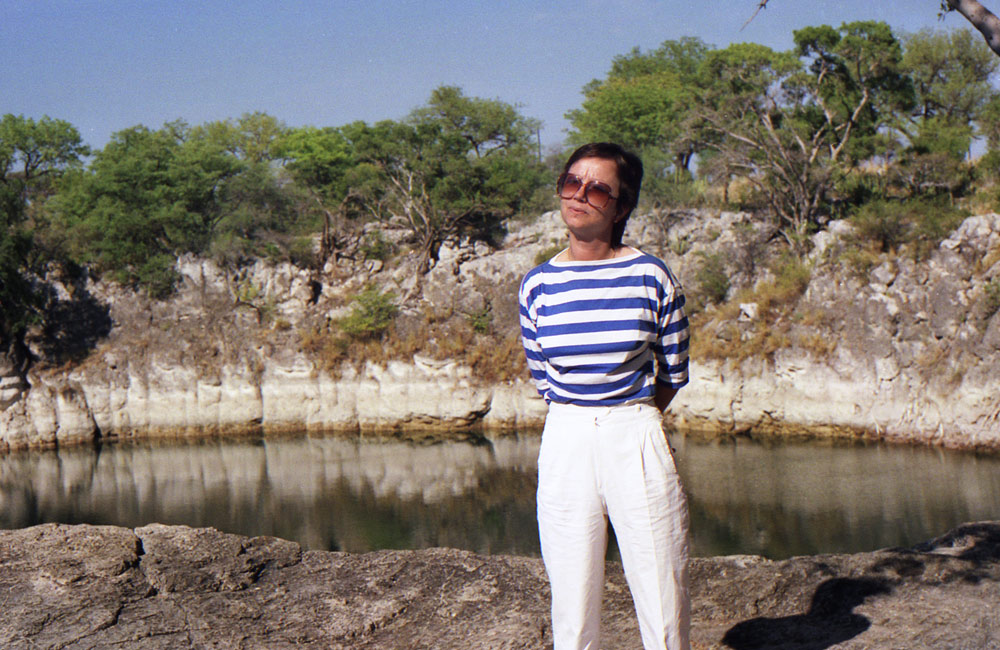
OTJIKOTO

Jadzia na drzewie ze skorpionami.
A co ja jeszcze pamietam o tym jeziorku,..... zyja tam ryby sporych rozmiarow, co przed niebezpieczenstwem, ich mlode ukrywaja sie w paszczy rodzica. Oczywiscie miejsce bylo calkowicie wyludnione od turystow.


Otjikoto – jezioro krasowe na terytorium północnej Namibii, w pobliżu górniczego miasta Tsumeb, w regionie Oshikoto. Jest jednym z dwóch stale wypełnionych wodą jezior Namibii. W odległości 15 km znajduje się bliźniacze jezioro Guinas. Przypuszczalnie te dwa zbiorniki połączone są ze sobą systemem wypełnionych wodą jaskiń.
Powierzchnia jeziora, przypominającego koło o średnicy około 100 m, wynosi 7075 m2. Jezioro Otjikoto zostało odkryte w 1851 roku przez Charlesa Anderssona i Francisa Galtona. Nazwa jeziora w języku herero oznacza głęboką dziurę. Jezioro stanowi zalany wodą lej krasowy o głębokości maksymalnej (według różnych źródeł) od 62, przez 76 do nawet 100 m, który łączy się z niezbadanym systemem wypełnionych wodą jaskiń, sięgającym do parku narodowego Etosha.
Podczas I wojny światowej niemieckie oddziały Schutztruppe zatopiły w jeziorze swoją broń i amunicję, chcąc uniknąć przejęcia jej przez oddziały południowoafrykańskie i angielskie. Po wojnie część sprzętu została wydobyta i znajduje się obecnie w muzeum w Tsumeb.
Jezioro leżało na trasie rowerowej podróży przez Afrykę Kazimierza Nowaka.
Otjikoto Lake is the smaller of only two permanent natural lakes in Namibia. It is a sinkhole lake that was created by a collapsing karst cave. It is located 20 kilometres (12 mi) north-west of Tsumeb and only 100 meters from the main road B1. The lake was declared a national monument in 1972.
The diameter of the lake is 102 metres (335 ft); its depth is undetermined. According to a Namibian tourism information organisation,[3] "the depth varies from sixty two meters at the side to one hundred meters in the center, and in some places leading off from the side depths of one hundred meters have been recorded", while an article in the Allgemeine Zeitung explains the depth problem: "the lake tapers into a lateral cave system making it impossible to determine its exact depth, estimated to be in access (sic) of 142 meters."
The lake was known to the San under the name Gaisis ("ugly"). When the Herero moved into the area, they named it Otjikoto (Otjiherero: "deep hole"). Namibia's Oshikoto Region, in which the lake is situated, is an alternative spelling of Otjikoto and derives its name from that of the lake. The first Europeans to discover the lake were Francis Galton and Carl Johan Andersson, who during their search for Lake Ngami came upon Otjikoto Lake in 1851.
The lake was a dumping ground for German Schutztruppe during World War I; in June 1915 German troops dumped war materials in the lake before surrendering to stop the South African and British troops from using them. Most of the larger pieces have been recovered and are displayed in Tsumeb Museum, but at least two cannons, along with quantities of ammunition, are still in the lake and can be viewed with a special diving permit. According to legend, the Germans also dumped a sealed safe into the lake. The search for it and the 6 million gold marks it is said to contain has as yet not been successful.
Botanist Kurt Dinter visited the lake in 1911 and collected several hitherto unknown species of plants, among them grass of the Rottboellia genus. Tilapia guinasana, a species of cichlid fish which naturally was only found in Otjikoto's sister lake, Lake Guinas, was introduced to Otjikoto Lake.[9] The claim that Lake Guinas is connected to Lake Otjikoto by underground caves is frequently made but not proven as yet. Wikipedia
